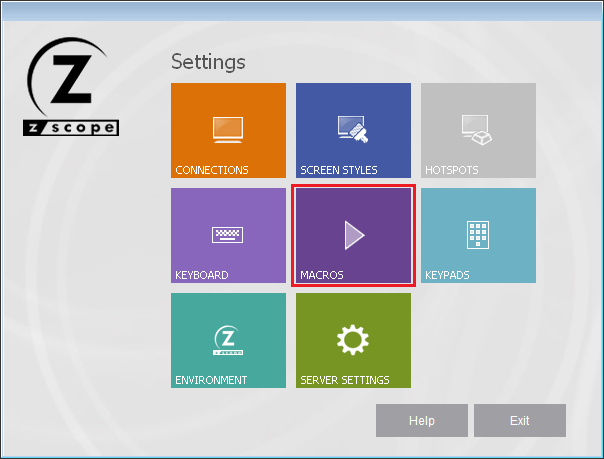Macros are created by recording a behaviour during a session with the host. At this point, they are only available for the user that created it, or for anonymous users if the user wasn't logged in at the moment. To make macros available for all the users connecting to a certain host, they have to be copied to a different folder.
The macros will be stored in C:\ProgramData\Cybele Software\zScope7\[UserName]
1. Inside this directory there will be subdirectories for each existing connection. Their name stands for the connection ID and will have a format that looks like this: "EB088A84-C46D-4882-90B3-15BD0A6A26D0C"
2. Open these connections folders and look for a file that has the same name as the macro you are looking for
3. If the macro's name were "Navigation" for example, the file name would be "Navigation.js".
To make these macros available for any user that connects to this host, copy the connection folder with the macros inside, to the 'zScope7' folder in Windows Program Data:
C:\ProgramData\Cybele Software\zScope7\3FD21D8F-B934-4471-ADCE-4723AB48B698
Afterwards, those macros can be managed on the 'Configuration Manager' through the 'Macros' icon.

For more information about how to manage Macros, consult the following sections:
If you want to learn the simple steps to creating a macro from scratch and run it, please read this topic: